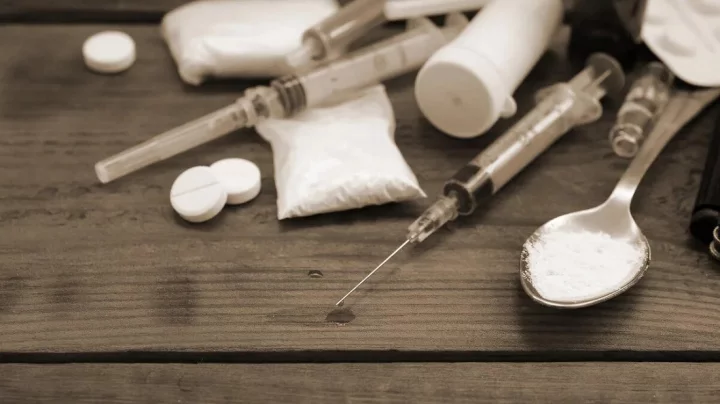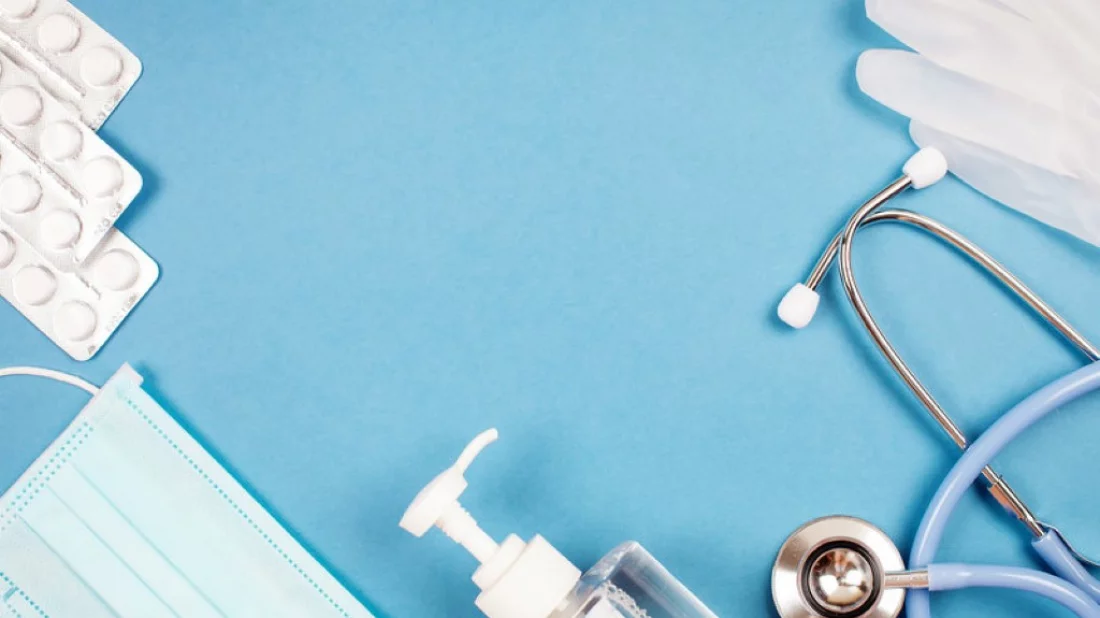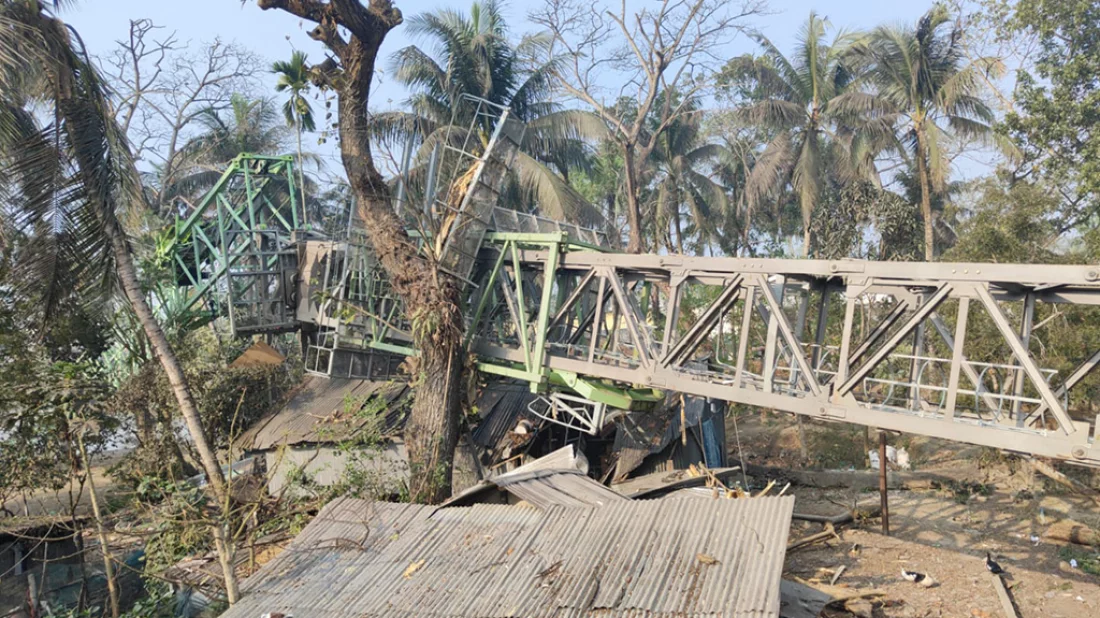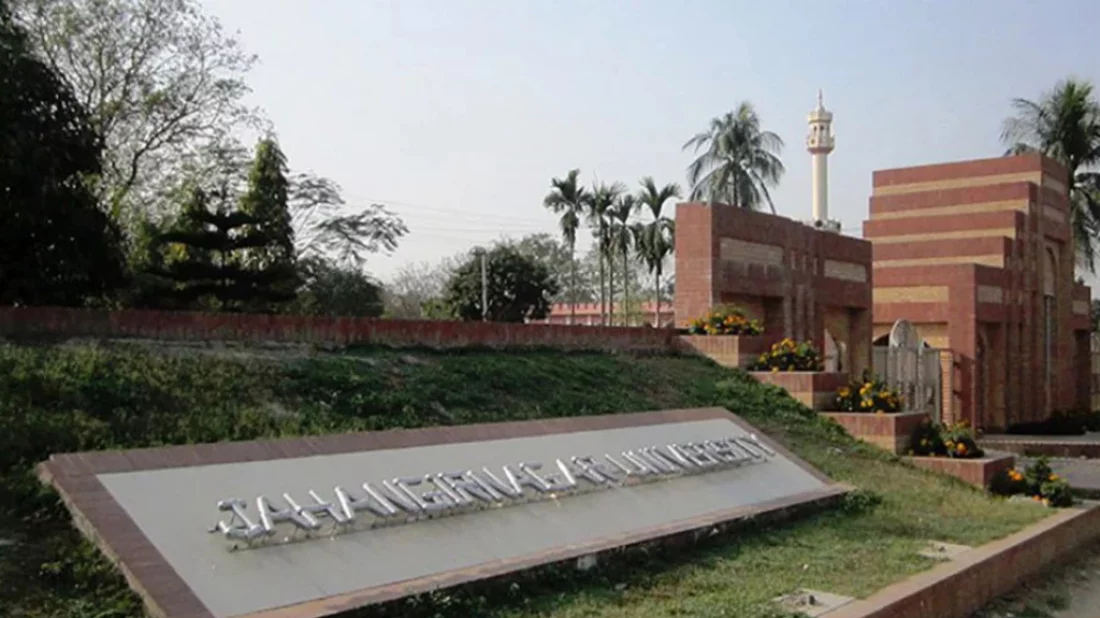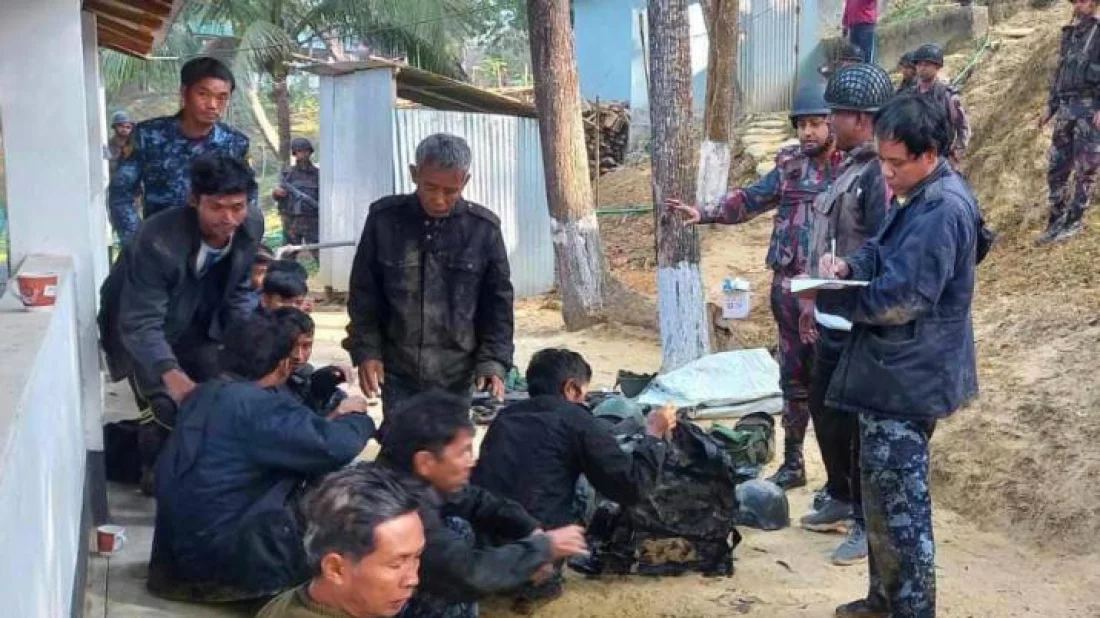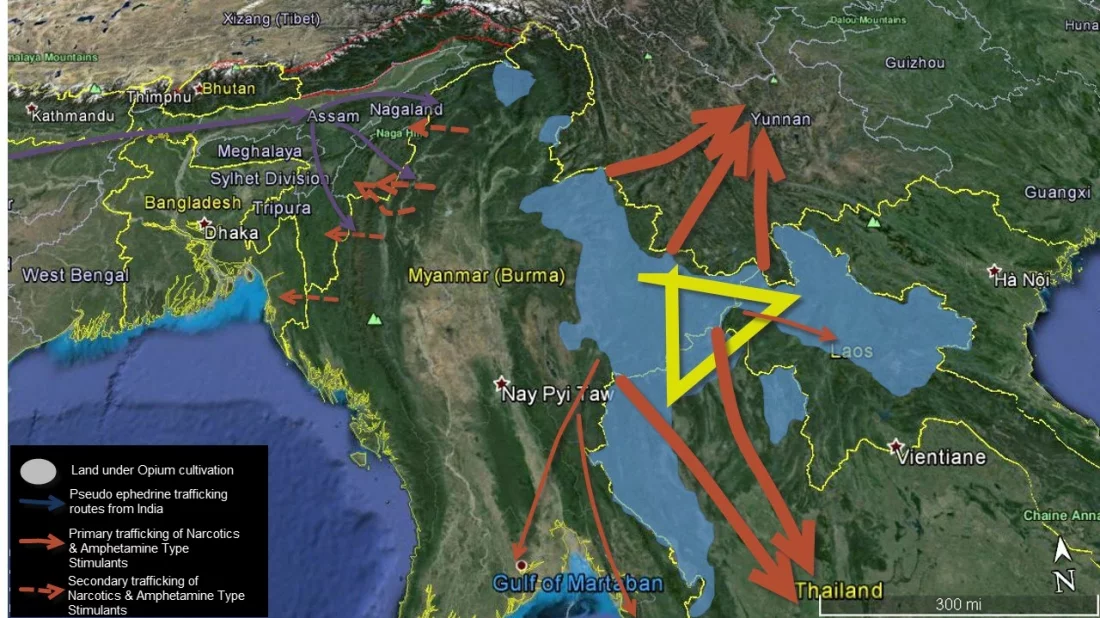
In recent months, Bangladesh has witnessed some massive seizures of expensive and new-generation drugs coming from abroad. One of those hauls stunned the nation when the Department of Narcotics Control seized 8.3 kilograms of cocaine, the largest consignment in Bangladesh’s history, from Dhaka airport on January 24 and another 200gms from a hotel in Uttara the following day.
According to official data from the Department of Narcotics Control (DNC), from 2015 till December 2023, the DNC and different law enforcement agencies, including the Bangladesh Police, Border Guard Bangladesh (BGB) and Coast Guard, seized 38.763 kg of cocaine. Other data suggest that cocaine was first seized in Bangladesh in 2013.
Cocaine, an expensive euphoria-producing drug, has no potential market in Bangladesh, and the country is believed to be used as a transit route from South America to Europe and North America.
Cocaine accelerates the heart rate, elevates blood pressure, and "speeds up," or over-stimulates, the body. Before the development of synthetic local anaesthetics, surgeons used cocaine to block pain. However, research has since shown that cocaine is a powerfully addictive substance that can alter brain structure and function if used repeatedly.
On September 4, 2022, a raid on a luxury flat in Dhaka’s upscale Banani area revealed a culture of Dhaka youths consuming fusion drugs and becoming dependent on the peddlers who bring the drugs from different countries. The DNC raided the flat based on intelligence information and arrested Salim Sattar, a director of “Samah Razor Blades Industries Limited.”
A dual citizen of Switzerland and Bangladesh, the arrestee admitted that he used to collect cocaine from Spain, LSD and MDMA (ecstasy) from the Netherlands, Kush (K2 or synthetic marijuana) from the USA, and ICE and cannabis locally.
Due to his travels in different countries, he came to know about various drugs. He had been consuming and supplying the drugs to a close circle and various parties.
Earlier, police busted the first meth lab in Bangladesh in Dhaka’s Zigatola in 2018. Known as ICE, the dangerously addictive stimulant, despite its steep prices, has become fairly popular among the youth over the last few years due to its easy availability as it comes alongside yaba from Myanmar.
Meth (methamphetamine) targets the central nervous system and produces an instantly elevated, euphoric effect that, according to experts, is much stronger than cocaine.
A youth who used to take the drug claims that curiosity about the drug stemming from the popularity of the American TV series “Breaking Bad” often leads youngsters to experiment with the dangerous drug.
In June last year, the United Nations Conference on Trade and Development (Unctad) said drug trafficking in Bangladesh is estimated to have resulted in an annual average of $481 million in outgoing illicit financial flows (IFFs) between 2017 and 2021.
The study finds that the calculation encompasses the trafficking of substances such as methamphetamine tablets (yaba), heroin, and synthetic opioids like buprenorphine and phensedyl.
DNC officials say yaba and other drugs have been spread in almost every corner of the country. Urban areas, in particular marketplaces, slums, parks, streets, educational institutions, crowded places, and even open spaces in recreational centres are aggravated by drug prevalence.
The existence of drug abuse in rural and remote areas is significantly visible.
All segments of society are badly affected by this menace. Mostly youngsters, unemployed, criminals, and vagabonds are becoming hooked by the drug spree. In recent years, some young people from affluent families have switched to new drugs. These drugs are made available by international drug cartels that use Bangladesh as a transit route.
Bangladesh is not a drug-producing country, but it is vulnerable because of the close proximity of international narcotics-producing and smuggling zones. Usually, cannabis, heroin, phensedyl, buprenorphine injection, and tapentadol tablets enter the country from India; yaba and ICE from Myanmar; and cocaine and LSD from South America and Europe.
According to the seizure list analysis, the major drug market is Dhaka. Other drug-prone districts are Cox’s Bazar, Chittagong, Comilla, Brahmanbaria, Narsingdi, Faridpur, Gazipur, Narayanganj, Tangail, Mymensingh, Rajshahi, Natore, Pabna, Sirajganj, Bogra, Joypurhat, Dinajpur, Satkhira and Jessore.
While the country produces liquor in a state-owned factory in Pabna named Carew and Co, the Bangladeshi rich and middle classes prefer foreign liquors sold in authorized bars and warehouses. However, a large number of foreign liquors are brought to the country from India due to high demand and sold illegally in Dhaka and elsewhere.
Alcohol users tend to support easy availability and denounce that the DNC terms it a drug, as the social norms against alcohol consumption seem to be weakening. The purchase and consumption of alcohol are restricted for common citizens if they are not tribals or from scheduled Hindu castes. Special permits are required to buy or consume alcohol, but there is no visible enforcement of this legal provision.
Cannabis continues to be the most widely used drug in Bangladesh, followed by amphetamine (yaba), heroin, codeine-based syrup, phensedyl, and ICE.
Most of the country’s cannabis was smuggled, mainly for Dhaka, through the eastern border in Comilla and Brahmanbaria. According to seizures of cannabis by all law enforcement agencies from 2018 to 2022, it was found that the trend of cannabis trafficking and abuse was increasing alarmingly. In 2022, the cannabis seizure was two times higher than in 2020.
According to the DNC, most of the yaba labs are located in Shan and Kachin states along the Myanmar-China border, and yaba enters through the coastal border and the Naf River. Yaba seizures increased gradually from 2009 to 2014 and then sharply until 2021.
In 2022, semi-synthetic opioid drug heroin was detected and seized mostly in Rajshahi zone, but the number of addicts is higher in Dhaka. The heroin is smuggled from Lalgola in India, according to the DNC. Law enforcers seized 8.4kg of heroin from a farmhouse in Godagari Upazila under Rajshahi in January this year. The highest seizure last year was 2kg in Dhaka while being transported from Chapainawabganj, and 1.5kg in 2021.
Phensedyl is mainly a codeine-based cough syrup trafficked from India. The big markets are Jessore, Dinajpur, Bogra, Brahmanbaria, Comilla, Rajshahi and Kushtia, but the biggest market is Dhaka. Pharmaceutical companies are trading the majority of the drug in the vicinity of the Indo-Bangla bordering regions of West Bengal and the eastern part of India.
Crystal meth or ICE is a highly potent stimulant drug that appears in varied forms, such as powder or shiny crystal. It is now trafficked from Myanmar, with the bulk figure at a highly increasing trend.
The seizure of ICE jumped to 133kg in 2022 from 37kg in 2021, probably due to the fact that crystal meth is more potent than yaba. In 2023, the Border Guard Bangladesh (BGB) seized 21 kilograms of crystal meth, believed to be the biggest bust in a single raid in the country.
On the other hand, the use of buprenorphine injection, an opioid medication, was found to be comparatively less than other popular drugs, with Chuadanga being the highest prevalence area. The second biggest market is the Dhaka metropolitan area, and other big markets are Bogra, Chapainawabganj, Natore, and Dinajpur.
The modes of transportation remain unchanged with some exceptions, with trafficking by road and rail being the most typical mode of transportation, while some use air. However, due to the rise in mobile courts and checkposts, the traffickers now focus more on innovative concealment methods, DNC officials say.
Meanwhile, internet-based connectivity and the rapid evolution of online platforms have created myriad opportunities for drug traffickers and drug users because of the high degree of anonymity and less likely risks of law enforcement vigilance.
Officials say drug buying and selling on the internet occur at different layers in terms of the clear web, deep web, and dark web. Drug traffickers and buyers shift these platforms frequently, assessing potential risks and difficulties, and the dark net has become a safe haven for most criminal transactions.

